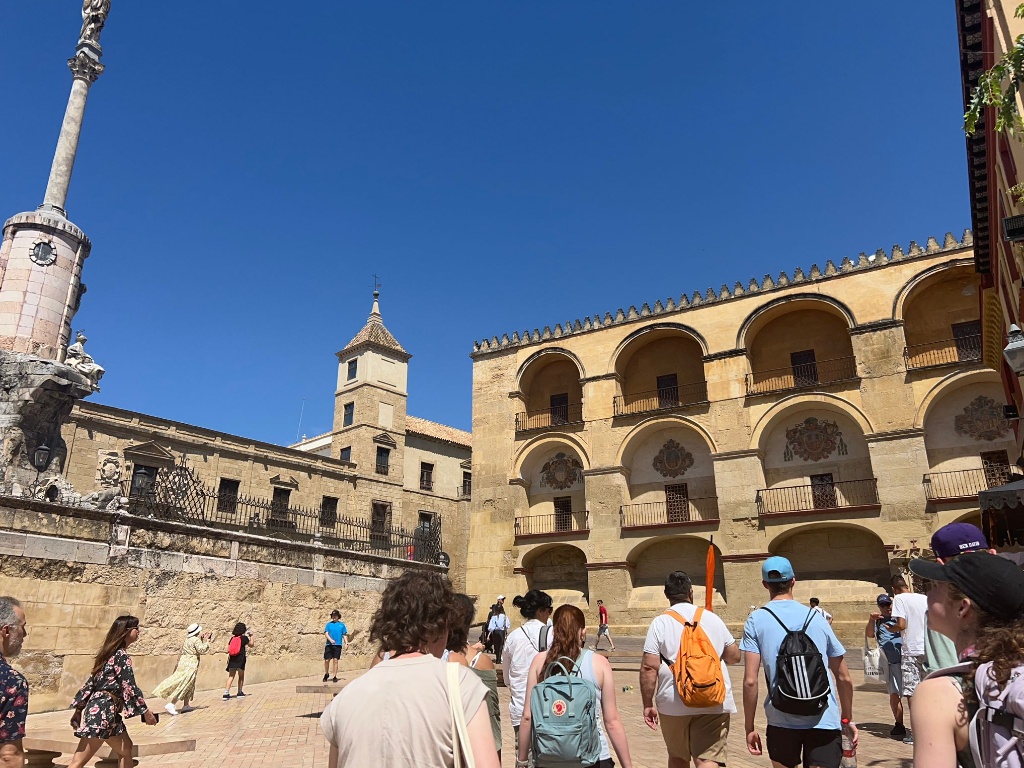At each IUHPFL site, students participate in excursions that take them outside of their host city to nearby locations of cultural and historical significance. This past summer, the Ciudad Real team visited the city of Córdoba, the countryside of Castilla-La Mancha, and finally Toledo and Madrid before traveling back to the US.
Córdoba is a beautiful city located in the southwest of Spain and reflects the mix of cultures that have contributed to the history of the region. It was the capital of the Al-Andalus region of the Umayyad Caliphate during the Islamic era and has a Jewish Quarter that dates back to the Middle Ages. IUHPFL students started off their visit to the city by touring the Jewish neighborhood and learning about the contact between Christianity, Islam, and Judaism that took place in Córdoba. Afterwards, they got lunch and did some shopping before exploring a bit on their own. To end the day, the group visited the Mezquita-catedral de Córdoba: an architectural marvel that was built as a mosque in 785 AD and later converted into a cathedral in 1285 AD.
Team Ciudad Real’s second excursion was to the area of Castilla-La Mancha, where they visited the Lagunas de Ruidera and saw the windmills of Campo de Criptana. This region is where Cervantes’s Don Quixote is set, and many of the sites and landmarks are referenced in the famous novel. The lagunas are part of a protected park and are connected by streams and waterfalls, making for a picturesque landscape. IUHPFL students toured the park and learned more about the lagunas and plants and animals of the area. Afterwards, the group set off for Campo de Criptana, where they visited the windmills central to Don Quixote. The windmills had some of the same machinery as they did back in the 16th century.
For the final excursion, the Ciudad Real group went to Madrid by way of Toledo. All groups at Spanish sites go to Madrid for an overnight trip before heading home. In Madrid, the Ciudad Real group first visited the Museo del Prado and got to see artwork by painters such as Velázquez, de Goya, and Bosch. Later that day, they went on a walking tour of Madrid and took pictures of the beautiful architecture around the city center. The following day, the group went to the Palacio Real and the Museo Reina Sofia, where Picasso’s famous Guernica is exhibited.
The Ciudad Real students, like students at other sites, got a chance to learn experientially about the art, architecture, culture, and history of their region through excursions. IUHPFL classes helped reinforce information gained on the trips; instructors prefaced each excursion with lessons on the sites they would later see. Excursions are just one part of what makes traveling abroad unique: learning outside the classroom is a memorable and special experience!






